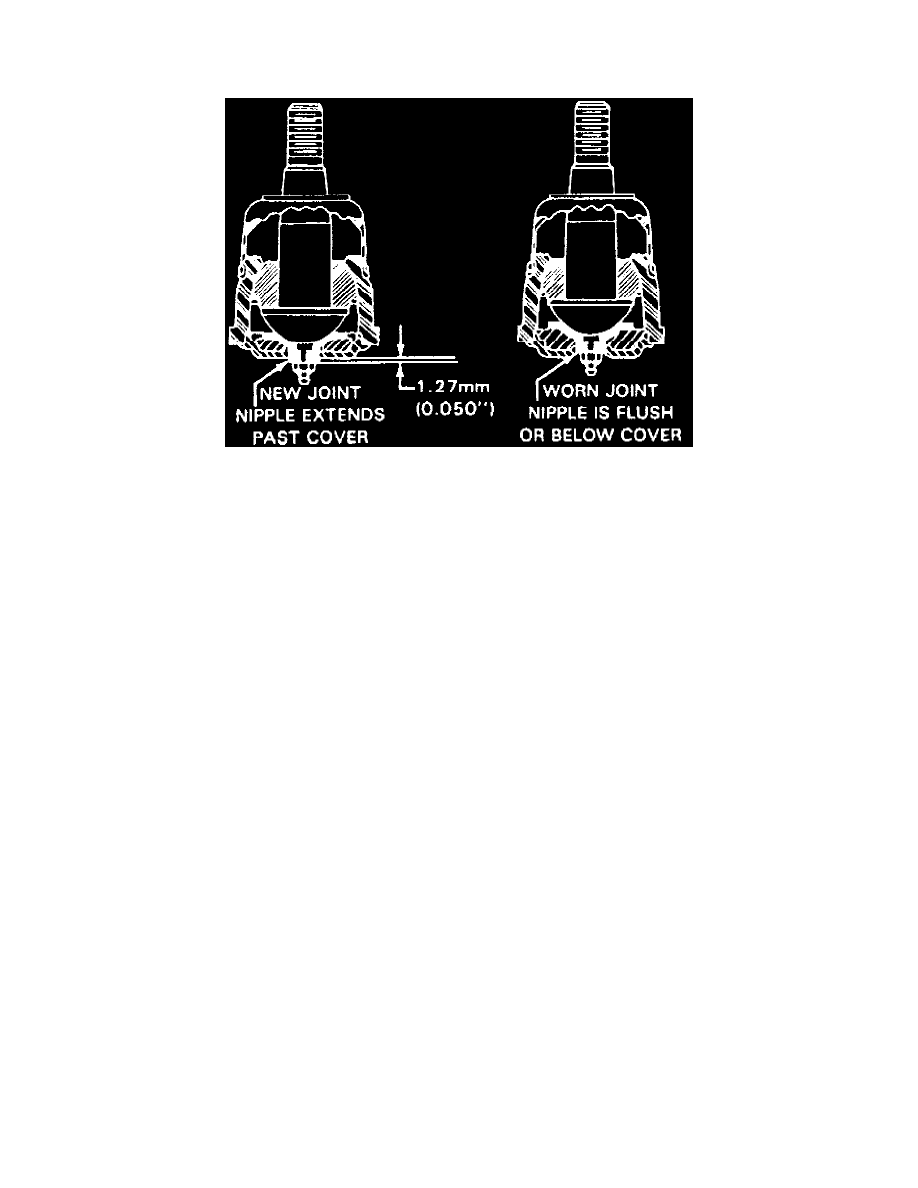DeVille V8-4.6L VIN 9 (1995)

Ball Joint: Testing and Inspection
Rear Ball Joint Inspection
Fig. 7 Ball Joint Inspection
The ball joint has a visual wear indicator. Checking the condition of the ball joint is a simple procedure but must be followed accurately to prevent
unnecessary ball joint replacement. The vehicle must be supported by the wheels during inspection to ensure vehicle weight is properly loading the
ball joints. The ball joint is inspected for wear by visual observation alone. Wear is indicated by retraction of the 1/2 inch diameter nipple into the
ball joint cover (the ball joint grease fitting is threaded into this nipple). The nipple protrudes .050 inch beyond the surface of the ball joint cover
on a new unworn joint. Normal wear will result in the surface of this nipple retracting very slowly inward. The ball joint should be replaced if the
nipple is flush or below the cover surface, Fig. 7. Ball stud tightness in the knuckle boss should also be checked when inspecting the ball joint.
This may be done by shaking the wheel and feeling for movement of the stud end or castellated nut at the knuckle boss. Checking the fastener
tightness at the castellated nut is an alternative method of inspecting (a loose nut can indicate a bent stud or an opened up hole in the knuckle
boss). If worn, the ball joint and knuckle must be replaced. If the ball joint is separated from the knuckle for suspension service, the ball joint seal
should be inspected for damage. A damaged seal will cause joint failure. If seal damage is found the ball joint should be replaced.
